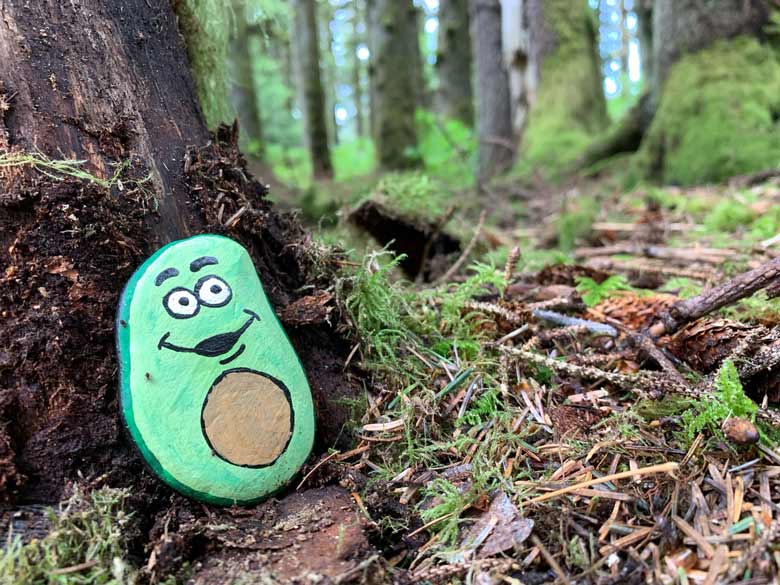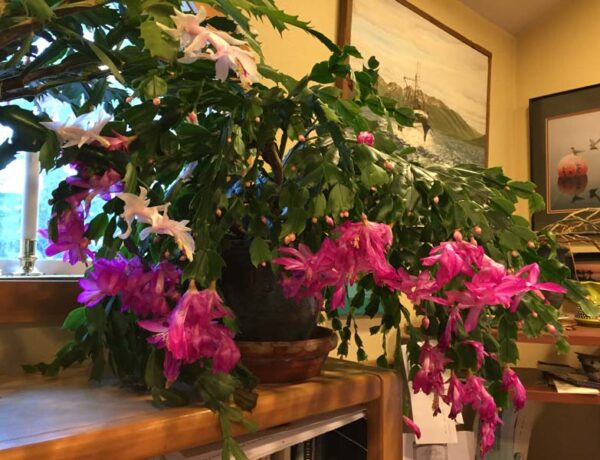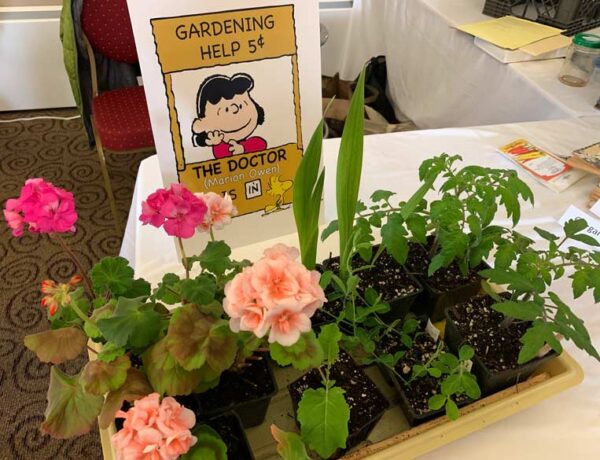Did you know that pound for pound, the leaves of most trees contain twice as many minerals as manure? Another icon of autumn is time, as in the passage of time. We become keenly aware of… the passage of time as the days grow shorter and we begin leaning into winter, as uncomfortable as it might be.
Winter’s approach can be stressful. But it doesn’t need to be that way…
A story is told about a South American tribe that was on a long march, day after day when suddenly they would stop walking, and then make camp for a couple of days before going any further.
So you might wonder, why did they stop?
Here’s the answer: It was time to rest so that their souls could catch up with them.
Wow. Hang on to that thought…
[Hi, Marion here. This article was originally published in the Kodiak Daily Mirror, the hometown newspaper for Kodiak, Alaska. Go here to access the archive page for the list of my past columns, written each week since 1986].
Since our long-day summers encourage us to overfill our waking hours with too much activity, autumn provides that time of rest for Alaskans. We often fill our summers to the point of warping natural rhythmicity.
Warping natural… What?
Wayne Muller in his lovely, bedside book, “Sabbath: Restoring the Sacred Rhythm of Rest” says, “We do not gauge the value of the seasons by how quickly they progress from one to the next.”
[perfectpullquote align=”full” bordertop=”false” cite=”” link=”” color=”” class=”” size=””]Every season brings forth its bounty in its own time and our life is richer when we can take time to savor the fruit of each.[/perfectpullquote]
Speaking of seasons’ bounty…
In the fall, we smoke salmon, split wood, harvest, rake leaves, make pickles, prepare our home for the winter, and hopefully… give thanks.
Then, in winter, we, like plants, go dormant. It’s a time for reflection, maintaining a healthy lifestyle, birdwatching, inner endurance, and looking for light in the midst of celestial darkness.
Come spring, we shift activities and prepare the soil for planting and start seedlings. We prune what has died or withered and take delight in the first crocus bulbs that bloom through receding snow.
Finally, in summer, we match the longer days by amping up our busyness once again: Tending the garden, thinning weeds, hiking, fishing, delighting in flowers, tide-pooling, standing with faces to the sun, and welcoming visiting family and friends.
How plants use anti-freeze
Though frost has recently kissed Kodiak, don’t panic. Freezing temperatures don’t always spell disaster in the garden. For example, when the temperatures dip a little below freezing, the air is moist enough for water vapor to condense (in the form of ice crystals) on the ground as well as on the plants.
Here’s where it gets interesting…
Then, when the water condenses, it gives off just enough heat to warm the air around plants. This warm envelope acts as a protective micro-climate.
On the other hand, when the temperature falls more than a few degrees below freezing, frost can damage leaves, shoots, and flowers no matter how humid the conditions are because water, whether in lakes, ice cube trays, or cells, expands when it freezes.
So as water within plant cells freezes, it ruptures the cell walls like a water balloon bursting under pressure. What a sight to see in slow motion, don’t you think?
In past columns, I’ve talked about how not all plants are created equal in that different plants (and parts of plants) have different freezing points. For example, pansy and nasturtium flowers might wilt like wet paper bags at 31 degrees, but their leaves remain firm and undamaged.
Leaves built like mini-mummies
The leaves of deciduous trees are affected by cold much like rhubarb plants, but with a twist. When maples, mountain ash, cottonwoods, and other deciduous trees drop their leaves, they form leaf buds that stay tightly wrapped within many layers, like mummies.
These mini-mummies go dormant until next spring. While not deciduous,
[perfectpullquote align=”full” bordertop=”false” cite=”” link=”” color=”” class=”” size=””]evergreen trees contain a natural antifreeze in their sap that helps prevent them from cold injury[/perfectpullquote]
Speaking of evergreens, plants that are cold-tolerant or native to northern regions have built-in mechanisms to survive the cold. Take rhubarb, for example. The rhubarb leaves die back each fall, but the roots and crowns (cozy in the insulating soil) remain alive to sprout again the next season. Mulching rhubarb in the fall adds insulation, by the way.
Mulch magic
So, an important reminder about mulching: It helps to follow Mother Nature’s cue: Leaves falling around tree bases provide a protective—and nourishing—layer. In the garden, applying a 3 to 6-inch layer of mulch in the form of leaves, compost, kelp (or a combination of all) around the base of shrubs, trees, and perennials, is one of the best defenses against freezing temperatures.
TIP: Distribute the mulch toward the trunk, but not up against it.
For perennials, mulch is usually applied directly on top of the plants after the main plant dies back.
How to rest… really rest…
It also helps to follow Nature’s cue when it comes to rest. Remember the South American tribe that camped for a couple of days so that their souls could catch up with them? Consider applying this kind of rest the next time you go for a walk. It’s a technique I learned from Muller’s book, “Sabbath.”
Looking for an excuse to rest? Try this…
- The next time you go for a walk, walk slowly and silently for thirty minutes.
- Make it an amble or a stroll. Simply walk without any purpose.
- Simply let your soul catch up with you, as Wayne Muller would say.
- Let your senses guide your walk.
- If you are drawn to a leaf, a stone, a color or the fragrance of the tall grass, simply stop and linger.
Thoroughly experience the moment with all your senses. Then, when it feels right, when it’s time, simply move on. When you are called to stop, stop and investigate. When you’re called to begin again, move along. That is all.
[perfectpullquote align=”full” bordertop=”false” cite=”” link=”” color=”” class=”” size=””]“At the end of thirty minutes,” says Muller, “Notice what has happened to your body, your mind, your sense of time.”[/perfectpullquote]
And if you happen to find a painted rock during your walk, so much the better.
The Autumn Garden Calendar
- Last chance to plant garlic cloves
- Begin the process of cleaning out hoophouse and greenhouse spaces
- Pull weeds and trim perennials
- Make compost
- When kale, broccoli, etc. is done, pull out plants, roots and all
- Pickle, freeze, dry, jam, ferment your harvest
Thank you very much for stopping by today.
Cheers!

PS Where have you found a painted rock?
Howdy! Here are some more resources for you:
Hi gardeners! Want to create your dream garden? You can do it, step-by-step with Marion Owen: The Gardener’s Coach. Visit my YouTube channel: The Gardener’s Coach.
Compost is the answer to everything in the garden!
And if you have enough of it, you won’t need much of anything else. To learn more, take my 60-second assessment.





No Comments